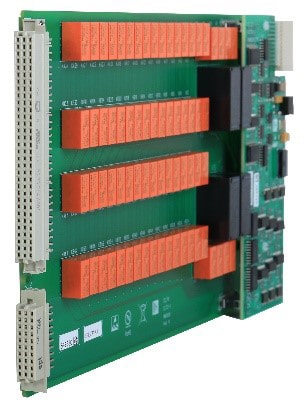Mixed Matrix Hipot Architecture

A hipot tester with mixed matrix architecture can save both money and space. Additionally, mixed matrix architecture provides long-term flexibility.
The Traditional High Voltage Tester
The matrix of a cable harness hipot tester refers to test points and related circuitry that allow high voltage to be switched to successive test points during an automated test.
In a hipot traditional hipot tester, the matrix (test points and related switching circuitry) are capable of supporting the same maximum hipot voltage.
Mixed Matrix High Voltage Tester
Hipot testers with the mixed matrix hipot architecture allow test point modules of different high voltage capacity to be installed in the same system. This means that the entire test point matrix doesn’t need to support the maximum test voltage, which voltage is often are only required for a minimal number of nets.
Mixed Matrix Savings
Note that as test point voltage capacity increases, the price-per-point increases dramatically while the test point density decreases. To maintain electrical isolation and current carrying capacity, the interface connectors and interface cables for these higher voltage test points are also larger and more expensive. The mixed matrix solution results in a much lower overall system cost and maximization of the test point density for a smaller system footprint.


Support of Hipot Levels
Common industry supported levels for hipot test points are as follows:
- 1500 VDC / 1060 VAC
- 2150 VDC / 1500 VAC
- 2830 VDC / 2000 VAC
- 3750 VDC / 2650 VAC
- 5100 VDC / 3600 VAC
- 6000 VDC / 5000 VAC
A hipot tester with a mixed matrix architecture could accommodate any combination of the above test levels. Rather than requiring a separate test point cabinet for each voltage level, newer mixed matrix testers even allow test point modules of different voltage levels to be installed in the same test point cabinet. This capability further increases the system efficiency while reducing the overall cost.

while all other nets are held at ground
Ensuring Hipot Basics
An important principle when hipot testing is that in general while hipot is applied to each tested net, other nets are held at ground. Any dielectric breakdown or current leakage beyond the acceptable programmed threshold results in a dielectric withstand or insulation resistance failure. In the mixed matrix hipot architecture, when hipot is applied to one net, all other nets, regardless the high voltage capacity of the test points to which they are connected, can be held at ground. This ensures proper isolation test levels between all DUT nets.
Investing in a mixed matrix hipot system can not only save money in meeting the short term application, but also provide a flexible configuration options for longer term needs.

